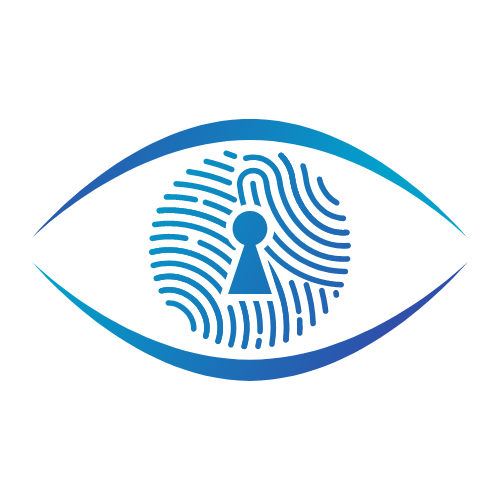Navigating the Neural Frontier: A Compliance Guide for Brain-Computer Interfaces

The advent of Brain-Computer Interfaces (BCIs) marks a revolutionary era in human-technology interaction, enabling individuals to control devices merely through thought. From assisting paralyzed individuals to communicate and move, to enhancing cognitive function and revolutionizing industries like healthcare, gaming, education, and marketing, BCIs offer transformative benefits. However, these groundbreaking advancements introduce unprecedented compliance challenges, primarily concerning the privacy and security of deeply sensitive neural data.
The Unique Nature of Neural Data
Neural data, encompassing information derived directly from the brain and nervous system, is distinct from other forms of personal information. While traditional data describes a person, neural data can reveal the person itself, serving as a digital "source code" for an individual's thoughts, emotions, and even intentions. This intimate nature means its compromise extends far beyond financial loss, striking at the core of personal identity and potentially unveiling subconscious tendencies, biases, and even future behavioral patterns.
breached.company/unpacking-the-invisible-threat-how-brain-computer-interfaces-can-be-hacked/
Key Compliance Challenges and Emerging Threats
The rapid evolution of BCI technology brings a host of security vulnerabilities and ethical dilemmas that demand robust compliance measures.
- Cybersecurity Risks:
- Hacking the Brain: Once a science fiction concept, the possibility of hacking the brain is now a real concern. Experts highlight the vulnerability of BCI devices to hacking, with potential for unauthorized access or manipulation of neural data.
- Remote Injection of False Brainwaves: A significant, underexplored vulnerability in EEG-based BCIs involves remotely injecting false brainwaves into the recording device using amplitude-modulated radio-frequency (RF) signals. These signals are received by the EEG equipment's physical structure, appearing as neurological signals, and can overwhelm actual neural activity. This type of attack has been successfully demonstrated on research-grade, open-source, and consumer-grade EEG devices, allowing attackers to control virtual keyboards, crash drones, or report false meditative states.
- Data Theft and Manipulation: Hackers could intercept neural data to extract sensitive thoughts, memories, or medical conditions. Conversely, they could send false signals back to the brain, influencing decision-making, altering emotional states, or causing physical harm. Such manipulations could lead to severe misdiagnoses in clinical EEG tests or allow attackers to force undesired actions from BCI-controlled systems.
- Sophisticated Attacks: The integration of hardware, software, and cloud-based data processing creates multiple attack vectors. AI-powered attacks can analyze neural signals, adapt to user behavior, and manipulate signals to compromise BCI integrity or launch personalized attacks. The advent of quantum computing also poses a significant threat to current BCI encryption methods, necessitating quantum-resistant cryptography.
- Insider Threats and Social Engineering: Individuals with authorized access or users manipulated into divulging sensitive information can also compromise BCI security.
- Ethical Dilemmas:
- Cognitive Privacy: Neural data is deeply personal; its compromise impacts identity beyond financial loss. Ethical concerns arise regarding consent, data ownership, and potential misuse by corporations or governments.
- Threat to Autonomy: BCIs are designed to empower users, but hacking could strip individuals of their autonomy, for instance, by hijacking a prosthetic limb or communication device.
- Weaponization: The dual-use nature of BCIs—beneficial in therapy but potentially harmful when exploited—raises concerns about their misuse for surveillance, coercion, or even warfare.
- Inequality in Security: Access to the most secure BCI technologies may be limited to wealthier individuals, leaving vulnerable populations exposed to greater risks.
- Regulatory Gaps and Challenges:
- Incomplete Legal Coverage: Most existing data laws, including the GDPR, do not clearly cover neural data, failing to provide full protection responsive to its unique sensitivity. Health data categories partially cover it, but neural data from consumer, recreational, or educational BCIs may fall outside these definitions.
- "De-identified" Data Loophole: While current privacy laws often carve out de-identified or anonymized data, this type of neural data still faces re-identification risks, especially with advanced AI. Companies often share non-identifying information without restriction, raising concerns about unintended group-level discrimination or profiling based on behavioral patterns inferred from neural data.
- Static Consent: Current consent models, often "once for all" and broad, are insufficient for neural data due to its uncertain future uses and potential for involuntary disclosure. The "purpose limitation" under laws like GDPR can also be too broad, allowing for repurposing of data without new consent.
- Broad Research Exception: Many data protection laws, including GDPR, offer broad exceptions for scientific research, which can lead to vague definitions and potential misuse of neural data, especially in commercially entangled research activities. This can result in data processing under "research" auspices that exceeds initial consent without users' full knowledge.
Emerging Regulatory Landscape
In response to these challenges, a nascent legal landscape is beginning to form globally.
- United States State-Led Efforts:
- Colorado became the first US state to explicitly include neural data under its "sensitive personal information" definition in 2024, requiring explicit, refreshed consent, privacy notices, and data protection assessments.
- California followed suit, also classifying neural data as "sensitive personal information" but granting individuals a limited opt-out right rather than requiring upfront consent. Its law also uniquely applies to employee data.
- The Minnesota Neurodata Bill represents a more advanced approach, proposing additional protections like independent notice for each BCI connection and separate consent for each use and third-party sharing.
- European Union Approaches:
- The GDPR indirectly applies to neural data via existing provisions for biometric and health data, requiring heightened safeguards for "special categories of data". However, experts note it's not fully sufficient for neural data's unique sensitivity.
- The EU AI Act indirectly covers neural data by regulating "emotion recognition systems," though it is tied to the "identification" premise of biometric data and limited to specific scenarios like the workplace and educational institutions.
- International Efforts:
- Chile made a landmark move in 2021 by amending its constitution to explicitly protect "neurorights," enshrining mental privacy and integrity as fundamental rights. A 2023 Supreme Court ruling against neurotechnology company Emotiv further demonstrated this commitment, ordering the deletion of neural data and strict product assessments.
- UNESCO is developing a new global standard on the ethics of neurotechnology, aiming to align its use with human rights, with a framework planned for adoption in November 2025.
Recommendations for BCI Compliance
To navigate this evolving landscape and ensure responsible innovation, BCI developers and operators must adopt a proactive, multi-layered approach to compliance and security.
- Implement Privacy-First Design and Robust Security:
- Embed safeguards from the earliest stages of product development, including mandatory encryption for all BCI devices (medical or not). Use enhanced encryption systems like homomorphic encryption or secure multiparty computing.
- Employ behavioral biometrics for authentication, analyzing unique patterns in neural signals or device interaction to ensure only authorized individuals access BCIs.
- Conduct static analysis and penetration testing of BCI software to detect vulnerabilities such as buffer overflows, denial of service threats, and improper Bluetooth encryption.
- Mandate measures to prevent access to neural data by anyone other than the user, including company employees, unless absolutely indispensable for consented use. Consider edge processing and end-to-end encryption.
- Develop BCI-responsive security frameworks, such as distributed computation and decentralized data sharing, to resist cyberattacks.
- Adopt Dynamic Consent and Heightened Transparency:
- Move beyond static, "once for all" consent. Implement dynamic consent procedures that enable ongoing monitoring and revision of consent decisions, especially for repurposing and third-party sharing.
- Provide heightened transparency at collection: detailed, item-by-item notice of all planned uses and third-party sharing.
- Require new, prominent notices and reconsent whenever previous information about purposes or third parties changes.
- Exclude vague "incompatibility" standards for neural data in future laws.
- Enable granular consent settings allowing users to continuously renew and alter preferences.
- Define and Limit Research Exceptions:
- If research is an exception for neural data processing, it must be subject to a clear, restrictive definition, preferably exhaustive or illustrative, explicitly excluding research activities directly related to commercial purposes unless undergoing rigorous ethical review for public interest. The California law's definition of research as contributing to "public or scientific knowledge" with "applicable ethics" provides a valuable example.
- Enhance Regulations for Non-Personal Neural Data:
- Subject the sharing and cross-border transfer of certain non-personal neural data to a security review procedure by relevant data authorities. This should include data from specific groups (e.g., minorities, rare disease backgrounds) and data with re-identification potential (e.g., cognitive data).
- These measures should not be limited to public-sector data, as risks stem from the data's nature.
- Establish Premarket Review Procedures for All BCI Devices:
- Beyond existing medical device reviews, a comprehensive premarket review procedure should be established for all BCI devices, including non-medical consumer products, and BCI-related R&D activities outside clinical contexts. This review should assess data risks based on specific ethical guidance for neural data.
- Foster Collaboration and Standards:
- Industry partnerships are crucial for sharing knowledge and resources, driving innovation in BCI security research.
- Establish security standards and certification programs to ensure a baseline level of security across the industry.
- Advocate for regulatory frameworks that govern BCI development and deployment, ensuring security and user protection, including data protection and cybersecurity regulations.
- Promote International Frameworks:
- Support international instruments through declarations or "soft laws" that establish universal ethics principles for neural data protection and BCIs, similar to declarations on bioethics and human genetic data.
Securing the future of BCIs is not just a technical endeavor but a moral imperative. By proactively addressing these complex compliance challenges, stakeholders can foster trust, safeguard sensitive neural data, and ensure that this transformative technology genuinely improves human lives while preserving the sanctity of human thought.





